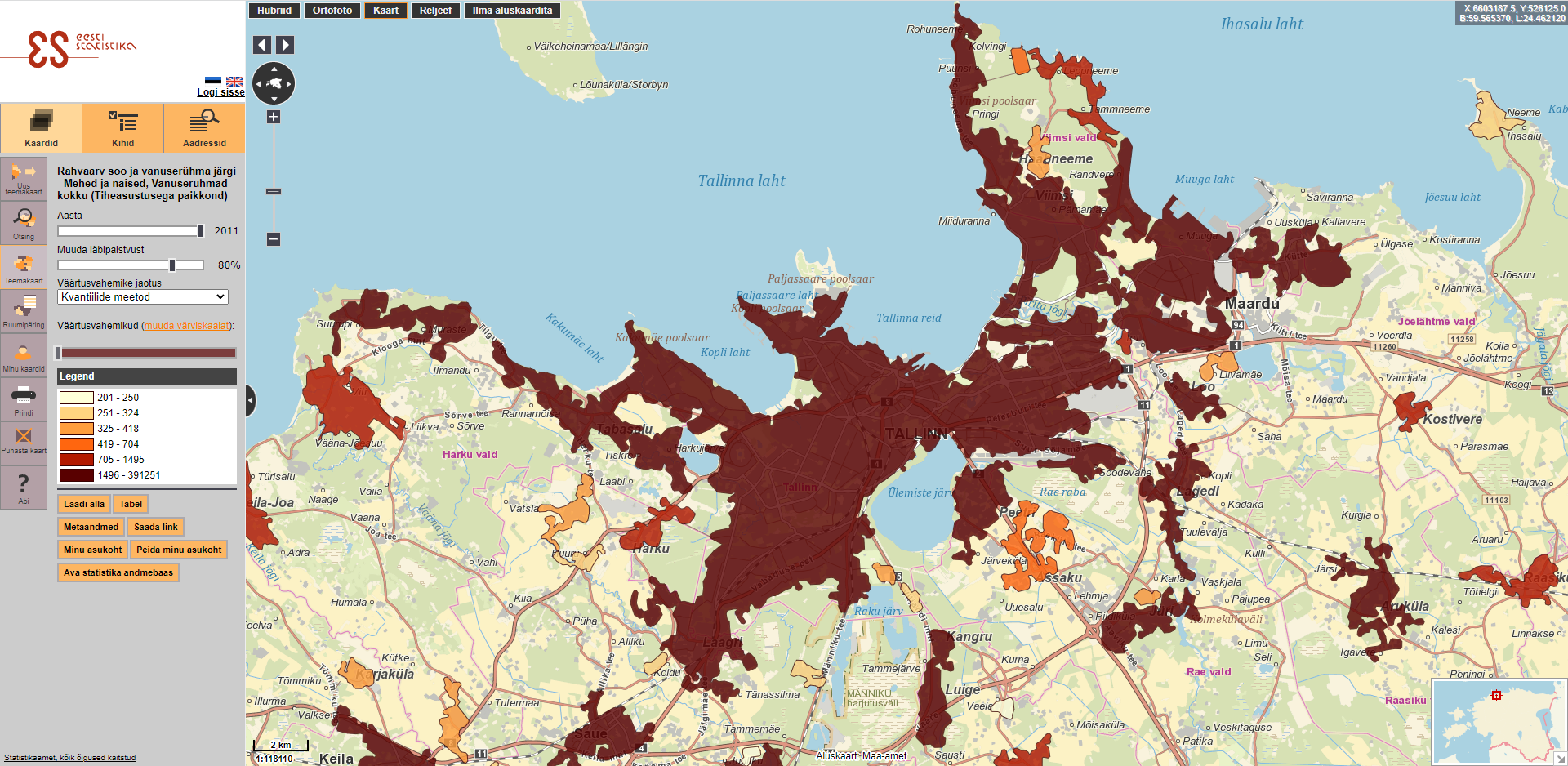PHC 2011: There are 369 built-up localities in Estonia
A built-up locality is a built-up area where the distance between buildings is no more than 200 metres and where there are at least 200 inhabitants. Hence, the borders of built-up localities do not coincide with those of settlement units. Based on the data from 2011, there are 369 such built-up areas in Estonia, where approximately 85% of the enumerated permanent residents live. By area and the number of inhabitants, the largest built-up locality is Tallinn, which, besides Tallinn city (excl. the city district of Pirita), includes the settlements of Tabasalu and Laagri. The district of Pirita together with Viimsi and Maardu constitutes a separate locality, because there is a big piece of uninhabited land (Lillepi Park) between Tallinn and the Pirita–Maardu locality. The next biggest locality, Tartu, is smaller by more than a quarter, both in terms of area and the number of inhabitants. The smallest built-up locality by its number of inhabitants is the Ala locality in Valga county, and the smallest one by area, Ülenurme locality, situated next to Tartu.
The population is estimated by localities, because in line with changes in human habitation, quite a few built-up localities may over the years be divided into seveal areas or join another locality. The statistics map application enables the users to observe the layout of settlements in 2011, but in the future, there will also be an option of comparing the distribution of the population with the localities calculated based on the results of the previous, 2000 Population and Housing Census.
Countries estimate and publish population indicators by localities based on the UN international treaty and European Union regulations, so that the geographic distribution of the population in Europe and the world would be internationally comparable.
The built-up localities of Tallinn and its vicinity, PHC 2011
